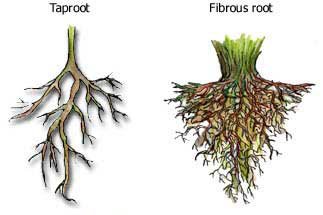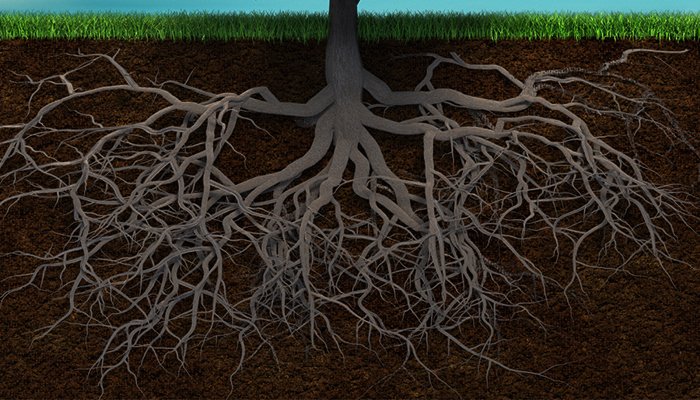A healthy root system is essential for a healthy tree. The definition of the root is the non-leaf, non-nodes bearing parts of the plant’s/tree’s body. There are essentially four answers to the question; what are the function of roots?
- Absorption of water and nutrients
- Storage of these nutrients and food
- Anchoring the tree to the ground
- Vegetative reproduction/competition with other plants
Absorption of water & minerals:
This is one of the most important life-supporting function of roots. Water and minerals absorb directly from the soil through the tree’s root system into the stem to be distributed to the leaves, flowers, fruits, etc. Without healthy soil, a tree’s roots will also be unhealthy, leading to a lack of nutrients needed to survive and support all tree functions.
Storage of nutrients and food:
Storage of nutrients and food is especially important for plants and trees during colder dormant months. During times of year when nutrients are in limited supply, this storage is key to surviving.
Anchoring your tree to the ground:
Another large function of roots is to secure the plant in the ground. This means in rain, wind, snow, and all other atmospheric conditions. Extreme weather conditions often uproot trees; however, many still withstand such conditions, proving the importance and strength of healthy roots. Plants have adapted to different approaches to help anchor themselves. There are two classifications for root systems:
 Fibrous root system – This is seen on plants like tomatoes and grasses when the system consists of many thin and highly branched, spreading roots.
Fibrous root system – This is seen on plants like tomatoes and grasses when the system consists of many thin and highly branched, spreading roots.- Taproot – This type of root system consists of one or more large main roots that have smaller side roots – think carrots and beets.
Vegetative reproduction/competition with other plants:
Vegetative reproduction is classified as any form of asexual reproduction within plants where a new plant grows from a fragment of the parent plant. Plants also compete for resources and nutrients. If plants and trees are in close proximity nutrients can become limited, as the trees will compete for survival. Your plants will also compete to show which can reproduce best. If a tree has more attractive flowers than another, the insects will be more attracted to it, leading to a higher pollination and reproduction rate.
If your root system is healthy, you will notice a few things:
- Adequate room to expand
- Enough space between trees to avoid competition
- White or light coloration under the root bark
If your roots are damaged or diseased, you may notice a few things:
- Yellow leaves with chlorosis (this means the leaves are experiencing a nutrient deficiency)
- Fungi or mushrooms growing at the base of the tree
- Slowed growth on the tree
- White fungi under the bark
- Death of branches at an increasing rate – this will likely begin at the tip and work its way inward
- Visible flat portion of the trunk
If you suspect your root system may be unhealthy, the best way to gather an accurate diagnosis is to hire a professional arborist for an examination. Prevention is the best way to deal with root diseases and damages. A professional will possess the knowledge to ensure the healthiest outcome for your trees. This can include knowledge on placement, best types of trees for your environment, quality trees, spacing, etc. Healthy soil is the first step in ensuring healthy roots. The function of roots is complex and designed to help your tree survive and thrive. For all of your planting, plant health care, landscaping, and tree service needs contact Red Cedar and receive a free consultation!


